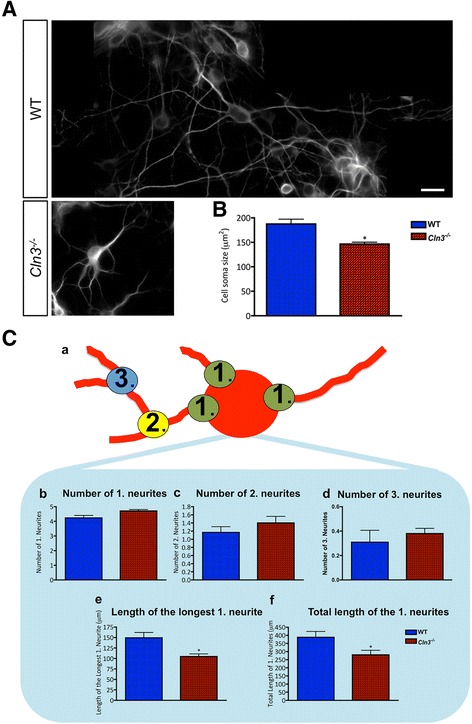Fig. 11.

Cln3 −/− cortical neurons are small and have shortened processes. The morphology of primary cortical wild type (WT) and Cln3-deficient (Cln3 −/−) neurons was compared quantitatively using ImageJ after cultures were fixed and immunostained with MAP2. A MAP2 expressing WT and Cln3 −/− cortical neurons showing that, unlike in WT cells, MAP2 immunoreactivity is not evenly distributed between the cell soma and processes in Cln3 −/− neurons. B Quantification of cell soma size revealed that WT neurons have a significantly bigger cell soma than Cln3 −/− neurons. C Quantitative assessment of neurite complexity, (a) schematic illustration of neurite branching, showing primary neurites (1) originating directly from the cell body, secondary neurites (2) originating from primary neurites, and tertiary neurites (3) originating from secondary neurites. The length of each of the primary neurites was analyzed, and the sum of the length of all of these neurites calculated. (b, c and d the number of each type of neurite did not differ between WT and Cln3 −/− neurons. e WT neurons had a longer primary neurite, and (f) an increased total length of the primary neurites compared to Cln3 −/− neurons. Data in (b) and (c) represent mean ± SEM from approximately 40 individual cells analyzed in each experiment. This experiment was repeated three times. The scale bar in (A) is 20 μm
